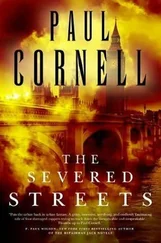The autopsy brings home the absolute finality of the event. At the crime scenes, the victims are most certainly dead, but at the point of autopsy, they become for the detectives something more-or less. It is one thing, after all, for a homicide detective to detach himself emotionally from the corpse that forms the center of his mystery. But it’s another thing altogether to see that corpse emptied of itself, to see the shell reduced to bones and sinew and juices in the same way that an automobile is stripped of chrome and quarter panels before being hauled to the wrecker. Even a homicide detective-a jaded character indeed-has to witness his share of portmortems before death truly becomes a casual acquaintance.
For a homicide detective, the Office of the Chief Medical Examiner is both a legal necessity and an evidentiary asset. A pathologist’s autopsy forms the baseline for any homicide prosecution simply because, in every murder case, it must first be proven that the victim died from human intervention and not from some other cause. But beyond that basic requirement, a good cutter’s abilities can often mean the difference between an accident being mistakenly viewed as a homicide or, equally disastrous, a homicide being attributed to accidental or natural causes.
To the pathologist, every body tells a story.
Given a gunshot wound, a medical examiner can determine from the amount and pattern of soot, burned powder and other debris whether a particular bullet was fired at contact range, close range or a distance greater than two to two and a half feet. More than that, a good cutter can look at the abraded edges of the entrance wound and tell you the approximate trajectory of the bullet at the point of entrance. Given a shotgun wound, that same pathologist can read the pellet pattern and gauge the approximate distance between the barrel of the weapon and its target. From an exit wound, an ME can tell whether the victim was standing free or if the wound was shored because the victim was against a wall, or on a floor, or in a chair. And when presented with a series of wounds, a good pathologist can tell you not only which projectile proved lethal but, in many cases, which projectiles were fired first, or which wounds were sustained postmortem and which were antemortem.
Give that same doctor a knife wound and you’ll learn whether or not the blade had one edge or two, was serrated or straight. And if the stab wound is deep enough, a medical examiner can look at the markings made by the knife hilt and tell you the length and width of the murder weapon. Then there are the blunt trauma injuries: Was your victim hit by a car or a lead pipe? Did that infant fall in the bathtub or was he bludgeoned by his babysitter? In either case, an assistant medical examiner has the key to the corporeal vault.
But if a forensic pathologist can confirm that a murder has been committed, if he can further provide some basic information about how the crime was done, he is rarely if ever able to lead a homicide detective from the how of it to the who of it. Too often the dead man comes to the detective as little more than a vessel emptied of life by persons unknown in the presence of witnesses unknown. Then the pathologist can provide all the detail in the world: wound trajectories, the sequence of wounds, the distance between shooter and victim-and none of it means a thing. Without witnesses, autopsy results become filler for the office reports. Without a suspect to be interviewed, the medical facts can’t be used to contradict or confirm information gained in an interrogation room. And though a cutter may be an absolute pro at tracking wounds through a human body, though he may recover every piece of lead or copper jacketing left inside that body, it hardly matters when no gun has been recovered for a ballistics comparison.
At best, an autopsy provides information that can be used by an investigator to measure the veracity of his witnesses and suspects. An autopsy tells a detective a few things that definitely happened in the last moments of his victim’s life. It also tells him a few things that could not have happened. On a few blessed occasions in a detective’s career, those few somethings happen to matter.
A pathologist’s death investigation is therefore never an independent process; it exists in concert with everything the detective has already learned at the crime scene and in interviews. An assistant medical examiner who believes that cause and manner of death can be determined in all cases solely by the examination of the body is just asking for pain. The best pathologists begin by reading the police reports and looking at Instamatic photos taken by the ME’s attendants at the crime scene. Without that context, the postmortem examination is a meaningless exercise.
Context is also the reason that the homicide detective is generally required to be present in the autopsy room. Ideally, cutter and cop impart knowledge to each other, and both leave the autopsy room with a greater sum of information. Often, too, the relationship creates its own tension, with the doctors arguing science and the detectives arguing from the street. Example: A pathologist finds no semen or vaginal tearing and concludes that a victim found nude in Druid Hill Park was not raped. Yet a detective knows that many sex offenders never manage to ejaculate. Moreover, his victim was a part-time prostitute and mother of three. So what if there isn’t any tearing? Alternatively, a detective looking at a body with a contact gunshot wound to the chest, a second contact wound to the head and multiple bruises and contusions to the torso may think that he’s got to be dealing with a murder. But the two gunshot wounds are not inconsistent with a suicide attempt. Pathologists have documented cases in which a person taking his own life has fired a weapon repeatedly into his chest or head with inconclusive results-perhaps because he jerked his hand at the last second, perhaps because the initial shots were far from lethal. Likewise, the chest bruising-though it may seem to be the work of an assailant-could be from the efforts of family members who, on hearing the gunshots, rushed into the room and began performing cardiopulmonary resuscitation on the victim. No suicide note? The truth is that in 50 to 75 percent of all cases, suicide is never accompanied by a written note.
The relationship between the detective and the medical examiner is necessarily symbiotic, but the occasional tension between the two disciplines produces its own stereotypes. The detectives genuinely believe that every new pathologist comes out of medical school with a by-the-textbook mentality that bears only a casual resemblance to what occurs in the real world. A new doctor must therefore be broken in like a new shoulder holster. Likewise, the pathologists consider the vast majority of homicide detectives to be glorified beat cops, untrained and unscientific. The less experienced the detective, the more likely they are to be perceived as amateurs in the art of death investigation.
A year or two back, Donald Worden and Rich Garvey happened to be in the autopsy room on a shotgun murder just as John Smialek, Maryland’s chief medical examiner, was leading a group of medical residents on the day’s rounds. Smialek had only recently arrived in Baltimore, by way of Detroit and Albuquerque, and consequently Worden probably seemed to him no more or less knowledgeable than any other police investigator.
“Detective,” he asked Worden in front of the group, “can you tell me if those are entrance wounds or exit wounds?”
Worden looked down at the dead man’s chest. Small entrance-big exit is the rule of thumb for gunshot wounds, but with a 12-gauge, the entrances can also be pretty fearsome. At close range, it’s never easy to say for sure.
“Entrance wounds.”
Читать дальше












